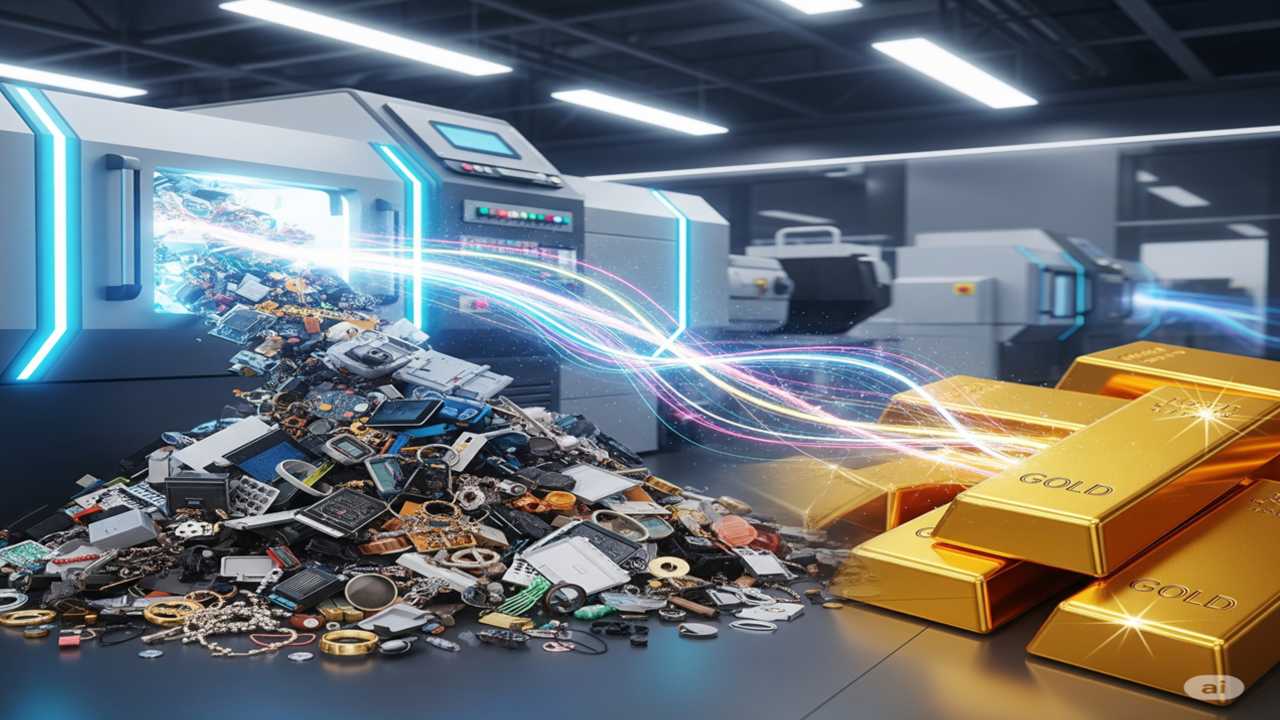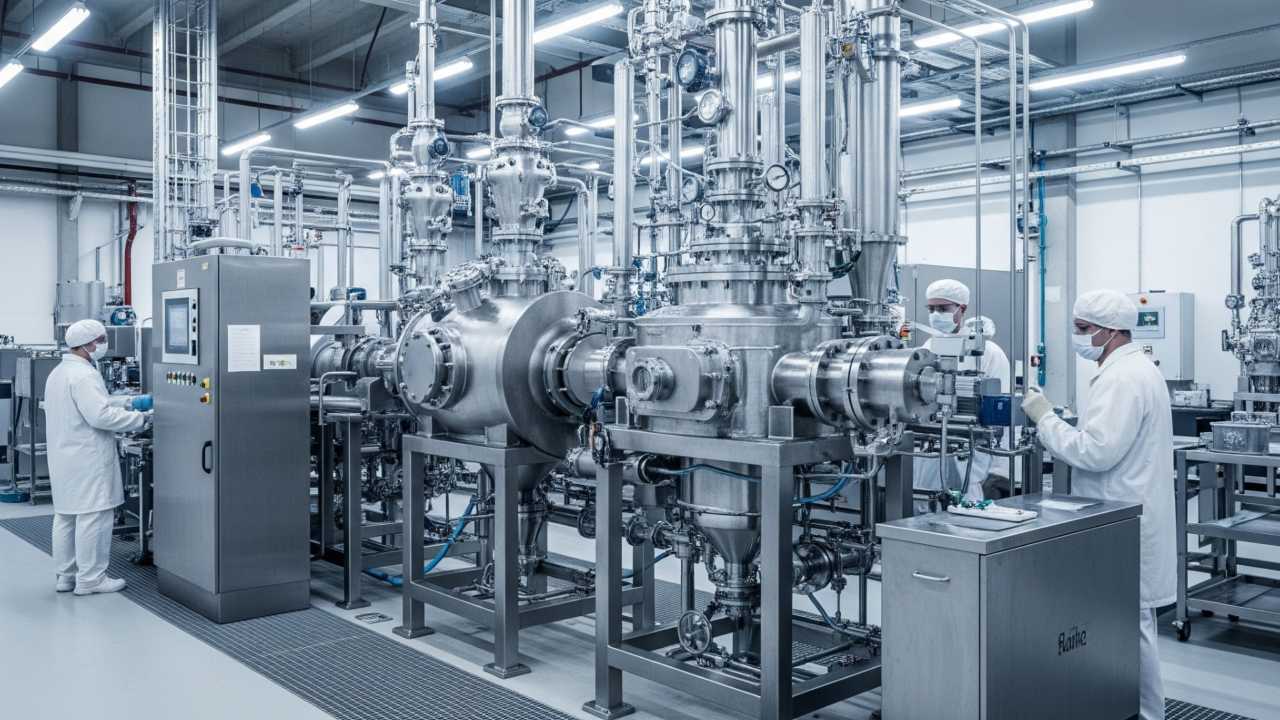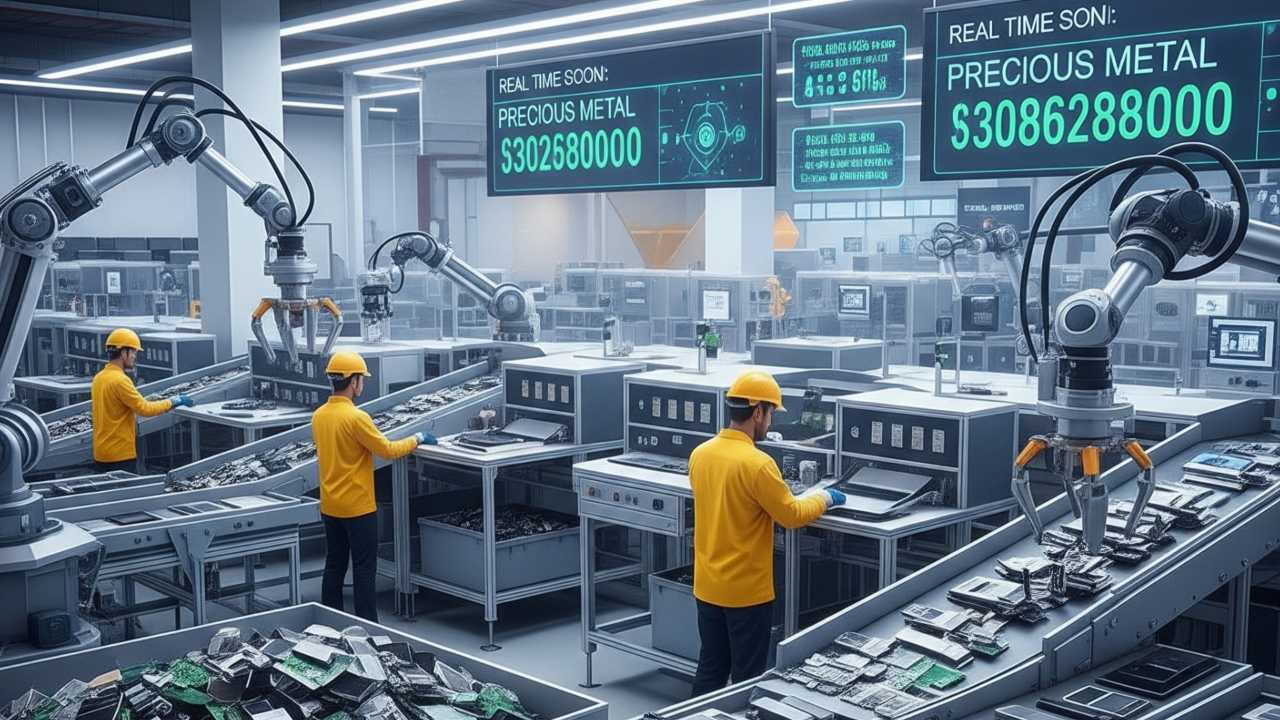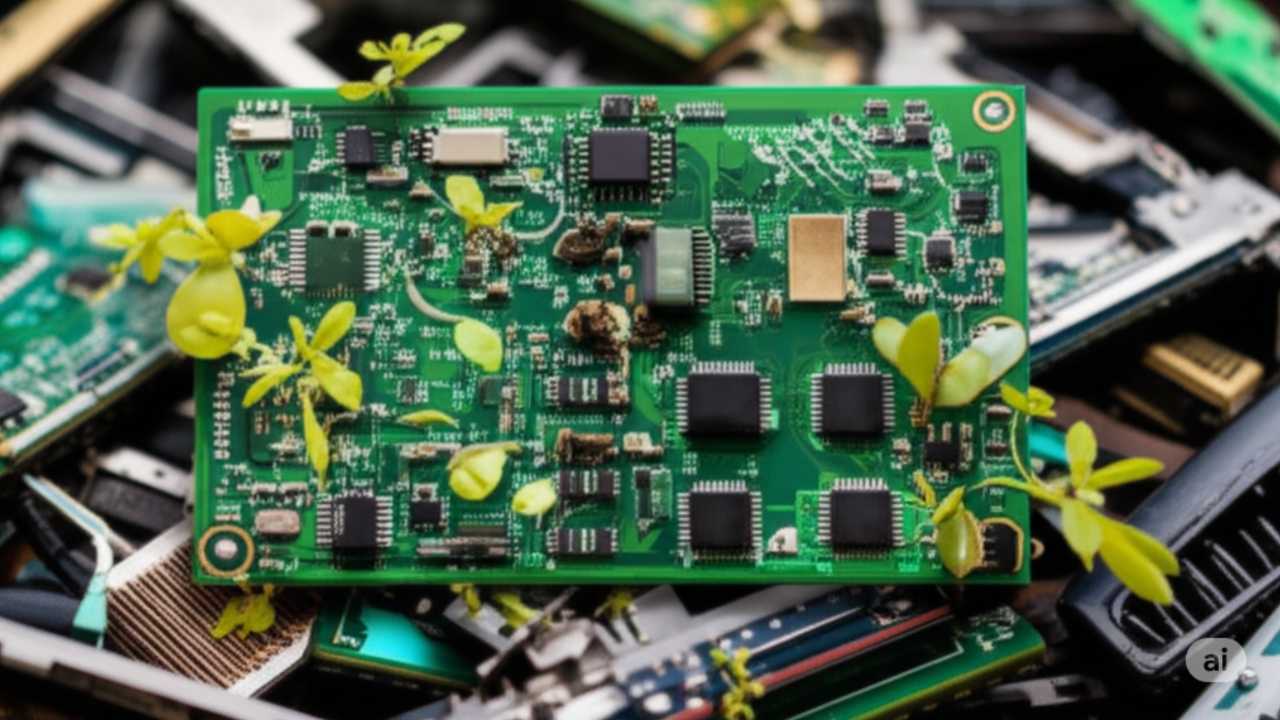Why Gold Recycling Plants Are Investing in Refining Tech: A Golden Opportunity for the Future
The gleam of gold has captivated humanity for millennia, serving as a symbol of wealth, status, and enduring value. While traditional gold mining continues, a significant shift is underway in the industry: gold recycling plants are making substantial investments in cutting-edge refining technology.
This isn’t merely an incremental upgrade; it represents a strategic pivot, driven by a confluence of economic imperatives, environmental consciousness, and the relentless pursuit of efficiency and purity.
This article delves deep into the multifaceted reasons behind this surge in technological investment, exploring the advantages, challenges, and the promising future it heralds for the gold industry.
The Shifting Sands of Gold Supply and Demand
For centuries, newly mined gold was the primary source meeting global demand. However, the landscape has evolved dramatically. The world’s above-ground gold stock, estimated to be vast, represents a readily available “urban mine.” This pool of existing gold, much of it in the form of old jewelry, electronic waste (e-waste), and industrial scrap, is increasingly becoming a crucial supply source.
The market for recycled gold is experiencing robust growth. Driven by fluctuating gold prices that make recycling more lucrative, increasing environmental regulations, and a growing consumer preference for sustainably sourced products, the scrap gold recycling market is projected to reach $23.06 billion by 2029, with a compound annual growth rate (CAGR) of 9.3%. This burgeoning demand, coupled with the finite nature of new gold deposits, is compelling recycling plants to enhance their capabilities.
The Economic Imperative: Efficiency, Purity, and Profitability
At the heart of the investment in refining technology lies a clear economic advantage. Advanced refining techniques offer significant improvements across several key metrics:
- Higher Gold Recovery Rates: Traditional methods, while effective, often left trace amounts of gold unrecovered. Modern technologies, such as advanced hydrometallurgical processes, nanotechnology applications, and precise analytical instruments like X-ray Fluorescence (XRF) spectrometry and Inductively Coupled Plasma Optical Emission Spectroscopy (ICP-OES), enable the extraction of gold even from low-grade materials, maximizing yield and minimizing waste. This directly translates to increased revenue for recycling plants.
- Enhanced Purity Levels: The value of gold is directly proportional to its purity. State-of-the-art refining processes allow recycling plants to achieve near-absolute purity, often meeting the stringent “Good Delivery” standards set by organizations like the London Bullion Market Association (LBMA). This allows them to command higher prices for their refined product and cater to industries demanding ultra-pure gold, such as electronics and medical devices.
- Reduced Operational Costs: While initial investment in new technology can be substantial, it often leads to long-term cost savings. Automation and AI integration, for instance, reduce the need for manual labor, optimize process parameters in real-time, and minimize errors, leading to increased productivity and lower labor costs. Energy-efficient machinery and closed-loop systems for water and chemical recycling drastically cut down on utility expenses.
- Value Addition: By transforming scrap gold into high-purity bullion or specialized products like customized bars and coins, recycling plants can create significant value beyond the intrinsic worth of the raw material. This allows them to capture a larger share of the profit margin in the gold supply chain.
- Competitive Advantage: In an increasingly competitive market, investing in advanced refining technology allows plants to differentiate themselves. They can offer superior purity, faster turnaround times, and more environmentally friendly processes, attracting a wider client base and solidifying their market position.
The Environmental Dividend: Sustainability as a Business Imperative
Beyond the immediate financial gains, the environmental benefits of advanced refining technology are a powerful driver for investment. The traditional gold mining industry faces significant scrutiny for its environmental impact, including deforestation, habitat destruction, water and air pollution from toxic chemicals like cyanide and mercury, and substantial energy consumption. Gold recycling offers a far more sustainable alternative, and new refining technologies amplify these benefits:
- Reduced Mining Dependency: Every gram of gold recovered through recycling means one less gram needs to be extracted from the earth. This directly alleviates the environmental pressures associated with mining, such as land degradation, resource depletion, and biodiversity loss.
- Lower Carbon Footprint: The energy required for gold recycling and refining is significantly less than that for primary gold extraction. It’s estimated that recycling gold can use up to 90% less energy than mining, leading to a substantial reduction in greenhouse gas emissions and a smaller carbon footprint for the industry as a whole.
- Minimized Chemical Usage and Pollution: Modern green refining methods are actively moving away from harmful chemicals. Techniques like advanced hydrometallurgy, bioleaching, and electrolytic refining utilize safer alternatives or dramatically reduce the volume of hazardous substances. Closed-loop systems for chemical and water recycling ensure that waste is minimized and pollutants are contained, preventing contamination of water bodies and soil. Fume scrubbing and gas treatment technologies are also employed to neutralize acidic fumes and eliminate harmful emissions.
- E-waste Management: The rising tide of e-waste presents both a challenge and an opportunity. Electronic devices contain small but valuable quantities of gold, along with other precious metals. Advanced refining technologies are crucial for efficiently and safely recovering gold from e-waste, preventing hazardous materials from ending up in landfills and contributing to a circular economy.
- Resource Conservation: By perpetually reusing existing gold, the demand for virgin resources is reduced, conserving natural resources for future generations. This aligns with the principles of a circular economy, where materials are kept in use for as long as possible.
Technological Advancements Reshaping the Industry
The investment in refining technology is fueled by continuous innovation in various fields:
- Automation and AI Integration: Automation is transforming gold refining operations, replacing manual processes with precise, robot-assisted systems. Real-time monitoring, powered by AI and machine learning algorithms, allows for instantaneous adjustments to process parameters, optimizing efficiency and purity. This not only enhances productivity but also improves worker safety by reducing exposure to hazardous environments.
- Green Refining Methods: The development of non-toxic chemical substitutes, alongside processes like bioleaching (using microorganisms to extract metals) and advanced hydrometallurgy, are making gold refining significantly more environmentally friendly. These methods focus on selective dissolution and precipitation, leading to cleaner separation and reduced waste.
- Nanotechnology Applications: Nanotechnology holds immense promise for gold recovery and purification. Nano-engineered surfaces can selectively trap gold molecules, ultra-fine filtration systems operate at a molecular scale, and catalytic nanoparticles can accelerate specific chemical processes. Sensor systems capable of identifying parts-per-billion level contaminants further enhance precision and recovery.
- Digital Transformation and Traceability: Blockchain technology is being explored to create immutable records of gold’s journey from scrap to refined product, ensuring ethical sourcing and transparency in the supply chain. Cloud systems facilitate real-time monitoring across multiple sites, while digital twins allow for process simulation before physical implementation, minimizing risks and optimizing designs. Advanced analytics transform operational data into actionable insights, driving continuous improvement.
- Improved Analytical Techniques: The ability to accurately and quickly analyze the composition of incoming scrap material is paramount. XRF spectrometry, ICP-OES, and gravimetric analysis are crucial for determining gold content and identifying impurities, enabling refiners to tailor processes for optimal results and ensure high-quality output.
Overcoming Challenges on the Path to Modernization
While the benefits are compelling, the transition to advanced refining technology is not without its hurdles for gold recycling plants:
- High Initial Investment: The capital expenditure required for acquiring and implementing cutting-edge refining equipment, automation systems, and advanced analytical tools can be substantial. This can be a significant barrier for smaller and medium-sized recycling operations.
- Technical Skill Requirements: Operating and maintaining sophisticated refining technology demands a highly skilled workforce. There is an increasing need for technicians proficient in digital literacy, data analytics, and the intricacies of automated systems, alongside traditional metallurgical knowledge. Training and retaining such talent is a key challenge.
- Complexity of Processes: Modern refining techniques, while highly efficient, are often more complex than their predecessors. Managing diverse scrap materials with varying compositions requires sophisticated process control and adaptability.
- Environmental Compliance: While new technologies aim to reduce environmental impact, staying abreast of evolving and increasingly stringent environmental regulations requires continuous investment in monitoring, waste management systems, and emission control technologies.
- Equipment Maintenance and Downtime: Highly specialized machinery requires rigorous maintenance schedules to prevent breakdowns and ensure continuous operation. Unplanned downtime can lead to significant production losses and increased operational costs.
- Raw Material Variability: The quality and composition of incoming scrap gold can vary significantly, posing challenges for maintaining consistent purity levels and optimizing refining processes.
The Future is Refined: A Vision for Gold Recycling
The investment in refining technology by gold recycling plants is not a fleeting trend but a fundamental shift towards a more efficient, profitable, and sustainable future for the gold industry. As global demand for gold continues, driven by traditional uses in jewelry and investment, as well as emerging applications in advanced electronics, medical devices, and catalytic converters, recycled gold will play an increasingly vital role.
The future of gold refining envisions:
- Fully Automated and AI-Driven Facilities: Refineries where human intervention is minimized, and AI optimizes every stage of the process, from sorting and analysis to dissolution and purification.
- Zero-Waste Operations: Through continuous innovation in chemical recycling, byproduct utilization, and energy recovery, the aim will be to minimize waste generation to near-zero levels.
- Hyper-Efficient Extraction: Nanotechnology and other cutting-edge techniques will enable the economic extraction of gold from even the most dilute or complex waste streams, including a broader range of e-waste and industrial residues.
- Enhanced Traceability and Transparency: Blockchain and other digital systems will provide unparalleled transparency, allowing consumers and investors to trace the origin and processing history of every gram of recycled gold, ensuring ethical and sustainable practices.
- Modular and Scalable Solutions: The development of modular and scalable refining units will make advanced technology more accessible to smaller and decentralized recycling operations, fostering a more distributed and robust recycling network.
- Collaborative Innovation: Increased collaboration between recycling plants, technology providers, research institutions, and regulatory bodies will accelerate the development and adoption of breakthrough refining techniques.
The decision by gold recycling plants to invest heavily in refining technology is a pragmatic response to a changing world. It’s a strategic move that not only promises enhanced profitability through increased efficiency and purity but also demonstrates a profound commitment to environmental stewardship. As these advanced technologies continue to evolve, they are poised to redefine the gold industry, positioning recycled gold as a cornerstone of a truly circular and sustainable global economy. The glint of gold will remain, but its journey from source to product will increasingly be a testament to human ingenuity and a commitment to a greener future.








